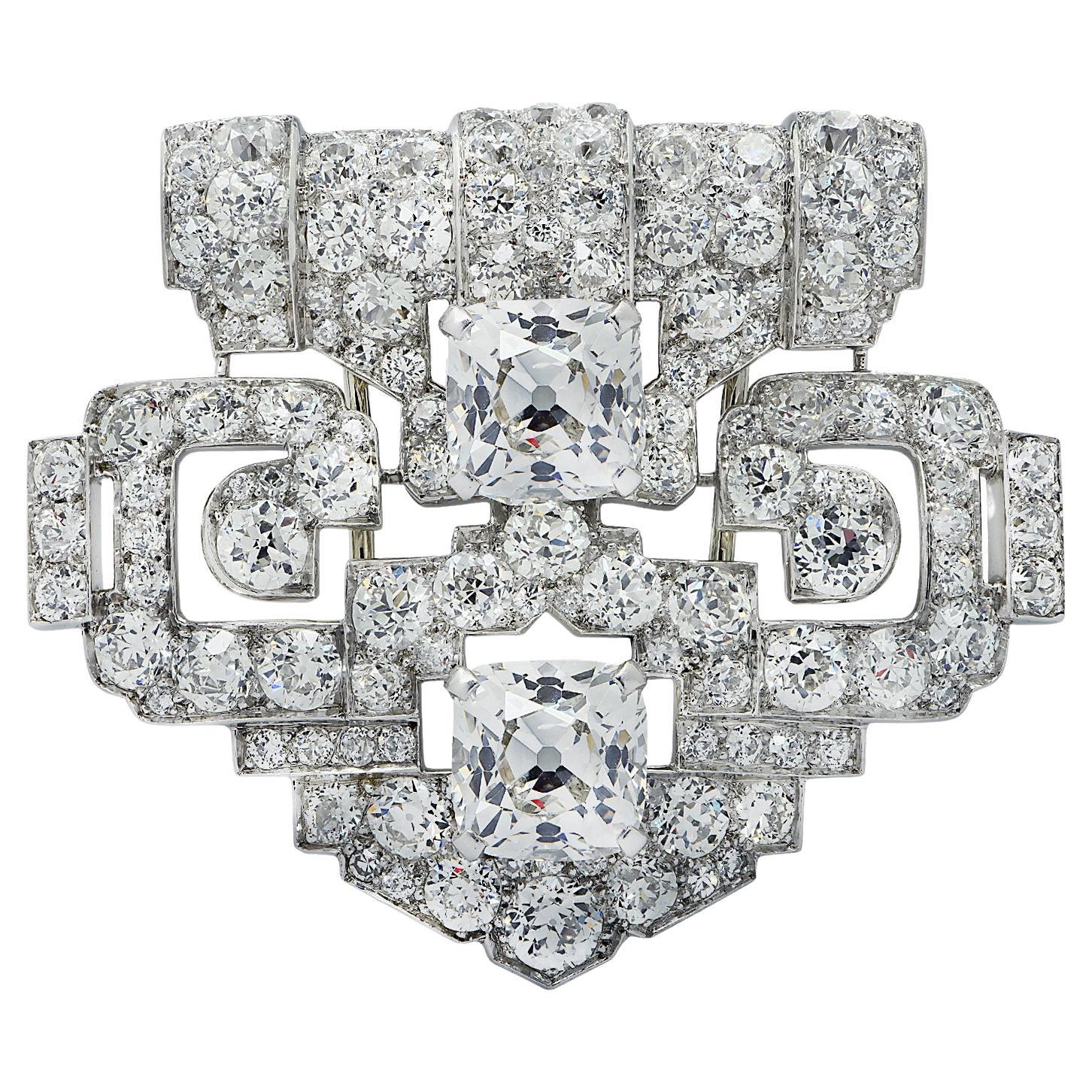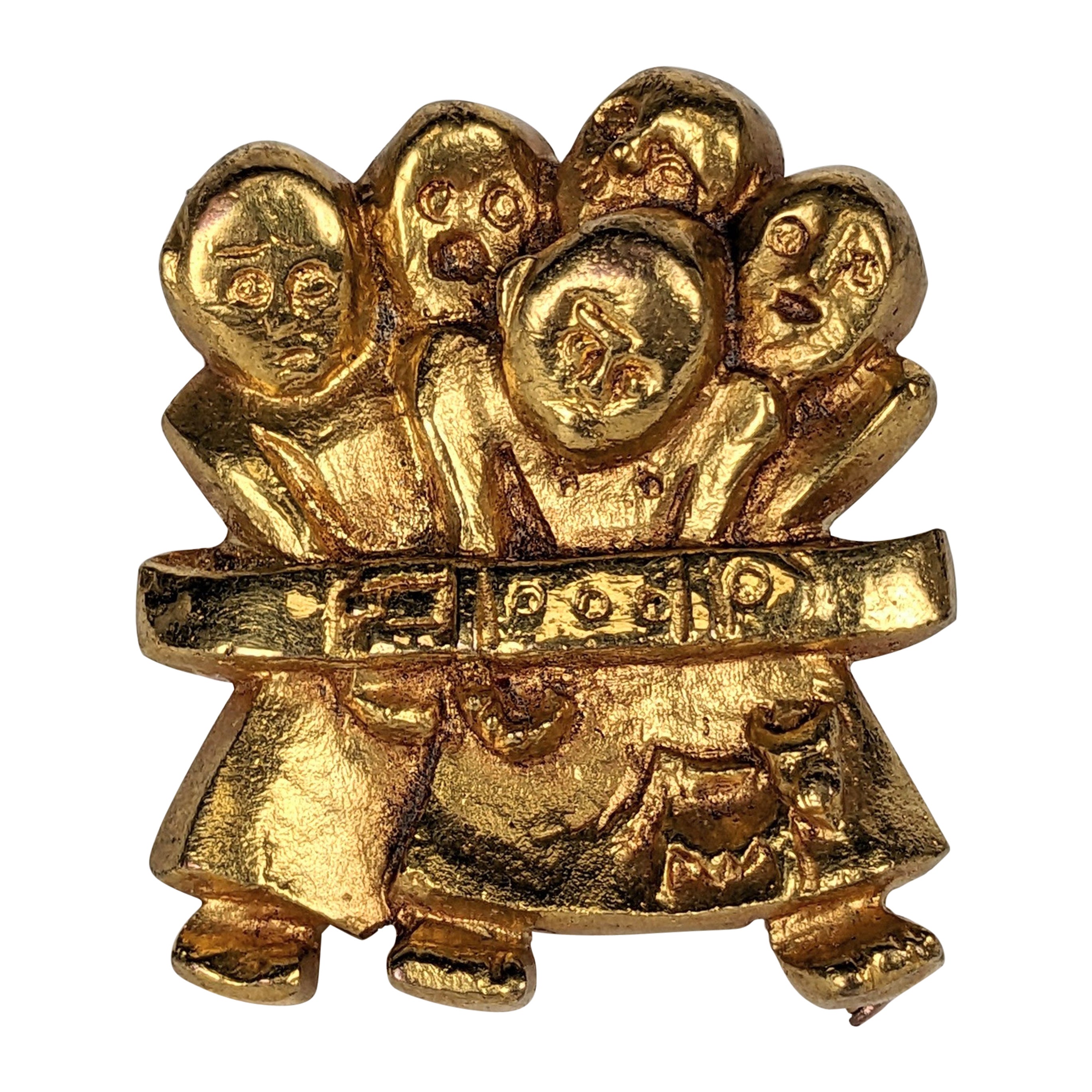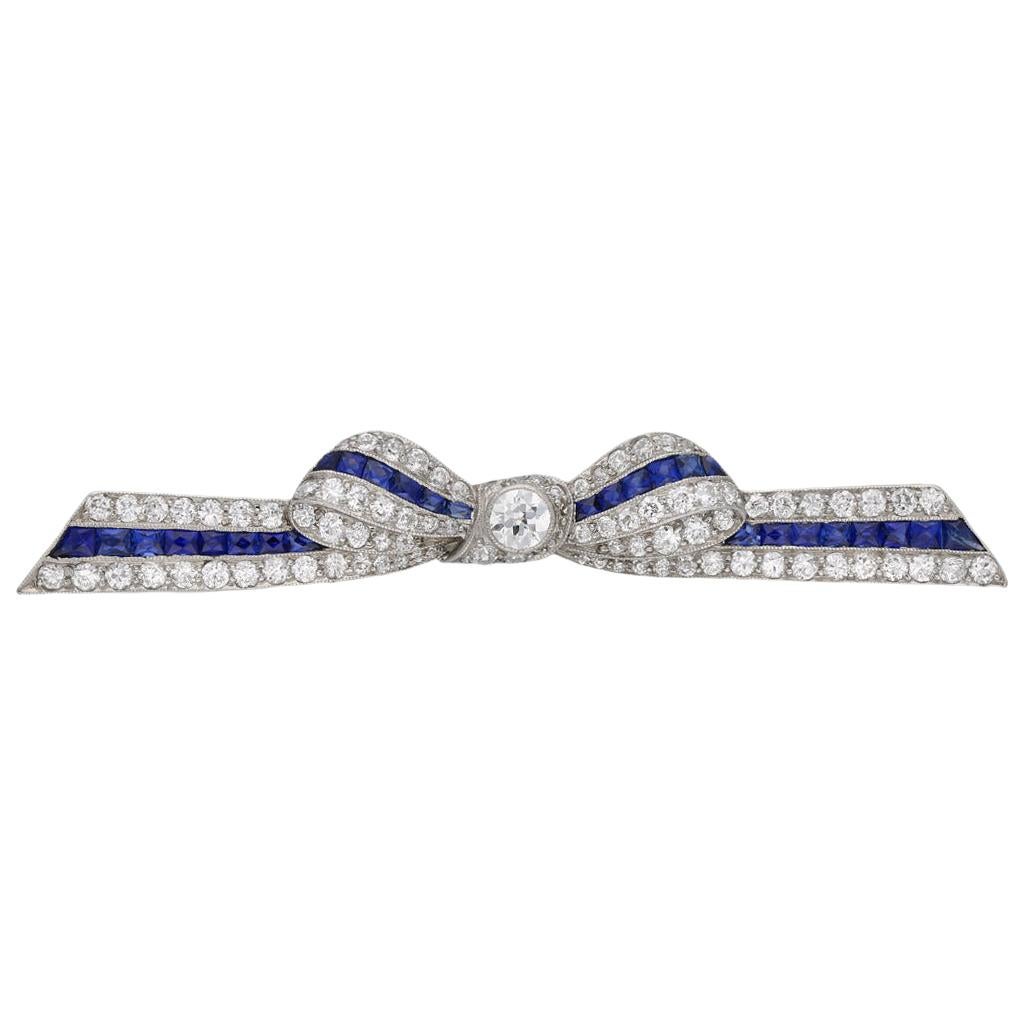Items Similar to YSL by R. Goossens Gold Tone Metal and Clear Lucite Heart Brooch
Want more images or videos?
Request additional images or videos from the seller
1 of 9
YSL by R. Goossens Gold Tone Metal and Clear Lucite Heart Brooch
About the Item
Iconic YSL Brooch Designed By Robert Goossens, Clear Lucite Heart and Gold Plated Metal Arabesques. Vintage from the 80s, can be worn as a Pendant.
Will come with its complete packaging : black velvet YSL Pouch and Original YSL Box, ready to gift !
Stamped at Back YSL MADE IN FRANCE
Excellent Vintage Condition !
Measurements : around 6 X 5 cm
An amazing Gift for Her and any Vintage High Fashion Jewelry Lover !
We are based in France and are a long time Hermes and fashion jewelry collector, buy with confidence.
We are used to ship overseas, with tracking number and insurance.
Be sure your order will be wrapped with great care to endure its travel.
We usually ship each order overnight, or in maximum 2 business days.
- Creator:
- Dimensions:Width: 2.37 in (60 mm)Length: 1.97 in (50 mm)
- Place of Origin:France
- Period:1980-1989
- Date of Manufacture:unknown
- Condition:
- Seller Location:CHAMPEAUX-SUR-SARTHE, FR
- Reference Number:1stDibs: LU3983221686982
About the Seller
New to 1stDibs
Joined in the past six months.
No Reviews Yet
Vetted Seller
These experienced sellers undergo a comprehensive evaluation by our team of in-house experts.
1stDibs seller since 2024
Typical response time: <1 hour
- ShippingRetrieving quote...Ships From: CHAMPEAUX-SUR-SARTHE, France
- Return PolicyA return for this item may be initiated within 3 days of delivery.
More From This SellerView All
- Goossens for YSL Heart Brooch or Pendant, Vintage from the 1980sBy Robert Goossens for Yves Saint LaurentLocated in CHAMPEAUX-SUR-SARTHE, FRThis is a YSL Heart Brooch designed by R. Goossens in blue lucite and gold tone metal, Vintage from the 1980s. Can be worn as a pendant too (gold chain necklace not included) Signed...Category
Vintage 1980s French Brooches
- YSL Gilt Metal and Blue Crystal Stones Bow Brooch, Vintage 1980sBy Yves Saint LaurentLocated in CHAMPEAUX-SUR-SARTHE, FRthis is a rare iconic vintage YSL Yves Saint Laurent Bow Brooch, gold Tone Metal adorned with Blue Crystal Stones. Vintage from the 1980s Signed YSL Made in France at Back Conditi...Category
Vintage 1980s French Brooches
- Vintage DIOR White Faux Pearl Clear Rhinestones Gold Tone Metal Starfish BroochBy Christian DiorLocated in CHAMPEAUX-SUR-SARTHE, FRUltra Rare CHRISTIAN DIOR Brooch, Featuring a Gold Tone Metal Starfish adorned with a White Central Faux Pearl and Clear rhinestones, vintage from the 80's. Highly Collectible Master...Category
Vintage 1980s French Brooches
- Christian Lacroix Poured Glass Cabochons and Gilt Metal Brooch, 1990sBy Christian Lacroix ParisLocated in CHAMPEAUX-SUR-SARTHE, FRUltra Rare Lacroix Brooch, Gold Plated Metal, Poured Glass and Glass Crystals, Vintage from the 90s. Ultra Collectible ! Stamped at back CHRISTIAN LACROIX Made in France CONDITION ...Category
1990s French Brooches
- LAWRENCE VRBA Sea Shells & Glass Crystal Oversized Brooch from the 1980sBy Lawrence VrbaLocated in CHAMPEAUX-SUR-SARTHE, FRThis is a Lawrence Vrba oversize Brooch made of oyster shell, sea shells, Glass Crystal and Poured Glass Beads, Vintage from the 1980s. Vrba designed under his own name after working...Category
Vintage 1980s American Brooches
- YSL Heart Brooch Gold Tassel with Original YSL Packaging, Vintage 1980sBy Robert Goossens for Yves Saint LaurentLocated in CHAMPEAUX-SUR-SARTHE, FRYSL Heart Brooch by Robert Goossens, adorned with a Cream White Faux Pearl and a Gold Tone Metal Tassel, Vintage from the 80s, Delivered in its Origin...Category
Vintage 1980s French Brooches
MaterialsEnamel
You May Also Like
- Cartier New York GIA Certified 11.24 Carat Old Mine Cushion Diamond BroochBy CartierLocated in Miami, FLMagnificent Cartier Art Deco Platinum and Diamond Brooch featuring a matching pair of important Old Mine Cut Diamonds weighing 5.60 carats and 5.64 carats. Both accompanied by a GIA report stating that they are H color VS1 and H color VS2 clarity. This brooch comes with an Expertise letter from IAJA (international Antique Jewelers...Category
Vintage 1930s American Art Deco Brooches
MaterialsDiamond, Platinum
- Carved Coral Buddha Pendant in 18k Gold Set with Diamonds, Emeralds and RubiesLocated in Honolulu, HIMAGNIFICENT large vintage Buddha pendant brooch in 18K yellow gold. This gorgeous pendant features a stunning Buddha carved in natural coral set...Category
Late 20th Century Unknown Pendant Necklaces
MaterialsCoral, Diamond, Emerald, Ruby, 18k Gold
- Line Vautrin "La Manif" Gilt Bronze BroochBy Line VautrinLocated in New York, NYGilt brooch by Line Vautrin (1913-1997), circa 1945-46. The design is known as ...Category
Vintage 1950s French Artisan Brooches
MaterialsBronze, Gilt Metal, Gold Plate, Brass
- Vintage Ruby Onyx and Diamond Classic Car BroochLocated in London, GBHere we have a superb vintage brooch. The piece has been crafted from 18ct yellow gold into the shape of a classic car from the 1930s. Automobiles of the 1930s exhibited many notable...Category
Vintage 1930s Brooches
MaterialsDiamond, Onyx, Ruby, Gold, Yellow Gold, Enamel
- Marcus & Co. Sapphire and Diamond Bow Brooch, American, circa 1935Located in London, GBSapphire and diamond bow brooch by Marcus & Co, American, circa 1935. A yellow gold and platinum bow form brooch set with one central row of twenty eig...Category
Vintage 1930s American Art Deco Brooches
MaterialsDiamond, Sapphire, Platinum
- John Brogden Shell Cameo Brooch and Earrings, English, circa 1870By John BrogdenLocated in London, GBAntique shell cameo brooch and earrings by John Brogden, English, circa 1870. A yellow gold suite of jewellery, the brooch composed of a horizontally situated oval Bull’s Mouth shell cameo of the Greek goddess Selene riding a serpentine dragon in a rubover collet setting, encircled by a conforming frame of gold beading and twisted gold wire punctuated with four gold palmette form plaques engraved and decorated with dark blue enamel and placed at the cardinal points, the reverse mounted with a hinged pin and scroll clasp, the earrings each composed of a vertical oval Bull’s Mouth shell cameo engraved with a bust length portrait of Selene with crescent-set headdress, encircled by a conforming frame matching that of the brooch with the addition of a pendant decoration composed of a horizontal bar of gold beading and twisted gold wires suspending gold link chains graduated from centre and ending in conical gold elements, the reverses mounted with French wire fittings, all in a fitted red leather case, the interior marked ‘FIRST CLASS PARIS MEDAL/ 1855.1867.1851/ PARIS FIRST CLASS & LONDON PRIZE MEDALS/ JOHN BROGDON/ Goldsmith/ MANUFACTORY/ 16, Henrietta St. Covent Garden/ London’. The cameo—defined as a gem, usually either a mineral or a shell, upon which a design has been carved in relief—is believed to have originated in Hellenistic Greece, during the third century BC. These miniature sculptures, at that time confined to the medium of hardstone, are thought to have been made with the primary purpose of personal adornment. The same practice of mounting cameos in jewellery was then continued by the Ancient Romans, and they are known to have been worn by many a Roman emperor. After the fall of Rome the fashion for cameos went into a decline, until it was again revived during the Renaissance period, brought about by a keen interest in the ancient world. At this time both antique and contemporary cameos were mounted in jewellery, as well as collected as objet d’art. The art of cameo cutting was revived in Italy, where it would remain a centre for the coming centuries. Again there was a lull in interest in carved gemstones, until the Neoclassical revival of the eighteenth century, largely stimulated by the discoveries of the ancient Roman cities of Pompeii and Herculaneum. As with the Renaissance, antique specimens were generally prized over modern cameos, and the worldliest men in Europe held them among their collections of art and antiques. That said, carving centres in Rome and Torre del Greco (near Naples) in Italy were established in response to the demand of the Grand Tourists, who travelled to Italy and Greece to become educated in the wonders of the ancient world. It was at this time that shell cameos, mostly made in Torre del Greco due to its proximity to the sea, became more popular, owing to the relative ease in carving shell over hardstone. In addition to Rome, hardstone cameos also became a specialty of Idar Oberstein, Germany, which had a long history with both the gem mining and cutting trade. In a shift away from the collector’s cases of the previous century, the nineteenth century saw a strengthening in the fashion for wearable cameos. After the Empress Josephine donned a cameo-set suite of jewellery at the coronation of Napoleon in 1804, cameo jewellery became all the rage. Napoleon played a further hand in promoting the art by establishing a gemstone carving school in Paris, inspired by his appreciation for the arts of the ancient world. By the mid-nineteenth century shell cameos, in part due to their lightness compared with hardstone cameos, were the height of fashion. Large shell cameos as well as hardstone cameos were set into contemporary mounts, often as suites of jewellery. Some of the best cameos of the nineteenth century—carved by a select group of recognized carvers—were set into revivalist mounts, corresponding to the subject matter. In Victorian England cameo jewellery was particularly prized, due in part to the fact that the Queen owned and wore a number of cameo jewels. One example which can often be seen in official portraits is the Badge of the Order of Victoria and Albert, carved by Tommaso Saulini of Rome, who also produced cameos for the maker of the present suite, John Brogden. To meet demand some carvers set themselves up in London, including William Schmidt, a German carver from Idar Oberstein, who produced cameos for top London jewellers, including Brogden, Carlo Giuliano and Child & Child. In fact, Schmidt purports to have been the first to carve cameos out of opal, which Brogden reportedly displayed in the Paris Exhibition of 1878. An extant example, now in the collection of the British Museum, was set by the Giuliano firm. Regarding subject matter, cameos throughout time have been largely figural, from bust length profile portraits to scenes with multiple full-length figures, and sometimes animals. Ancient Greek and Roman cameos often depicted mythological scenes as well as contemporary figures. During the Renaissance, mythological scenes were popular, often taken directly from ancient sculpture, as well as portraits of notable contemporary figures. During the eighteenth and nineteenth centuries, due to the revivalist styles, both Renaissance and Classical subjects were copied and set into matching (and sometimes unmatching) revivalist mounts. From the Renaissance through the Victorian era, being able to recognize the source of the carving in a cameo was a mark of erudition, revealing in the wearer knowledge of Classical art. As mentioned, the present cameo parure...Category
Antique 1870s English Victorian Brooches
MaterialsYellow Gold
Recently Viewed
View AllMore Ways To Browse
Used Fashion Jewelry
Fashion Jewlery
Clearence Jewelry
Vintage Jewelry Collectors
Vintage Heart Jewelry
Vintage Heart Jewelry Box
Goossens Jewlery
Clear Lucite Jewelry
Hermes For Her
80s Fashion Jewelry
Vintage Pendant Yves Saint Laurent Jewellery
80s Velvet
Goossens Robert
Vintage Ysl Heart
Hermes Velvet
Robert Brooch
Vintage Hermes Jewelry Box
Yves Saint Laurent Pouch





